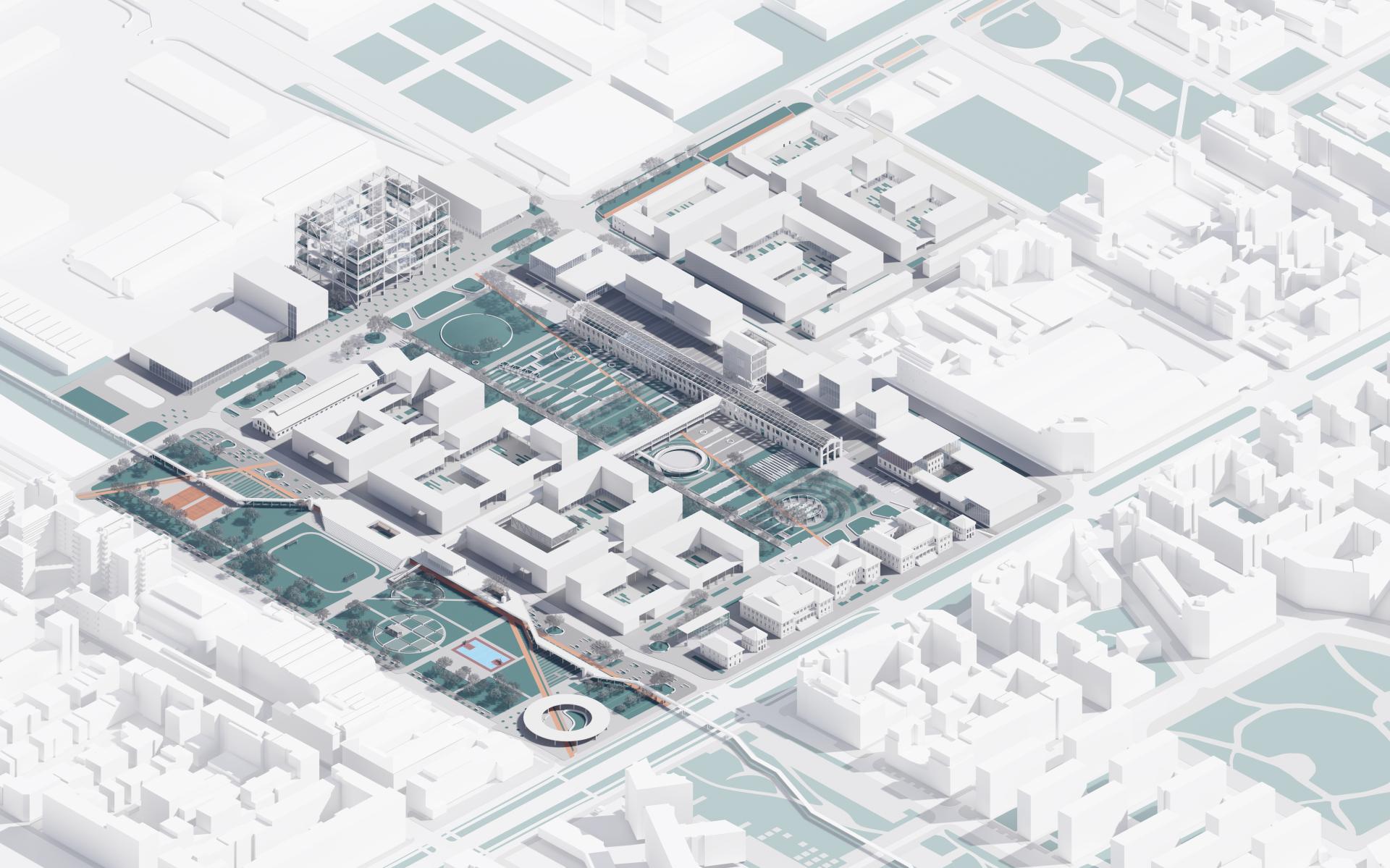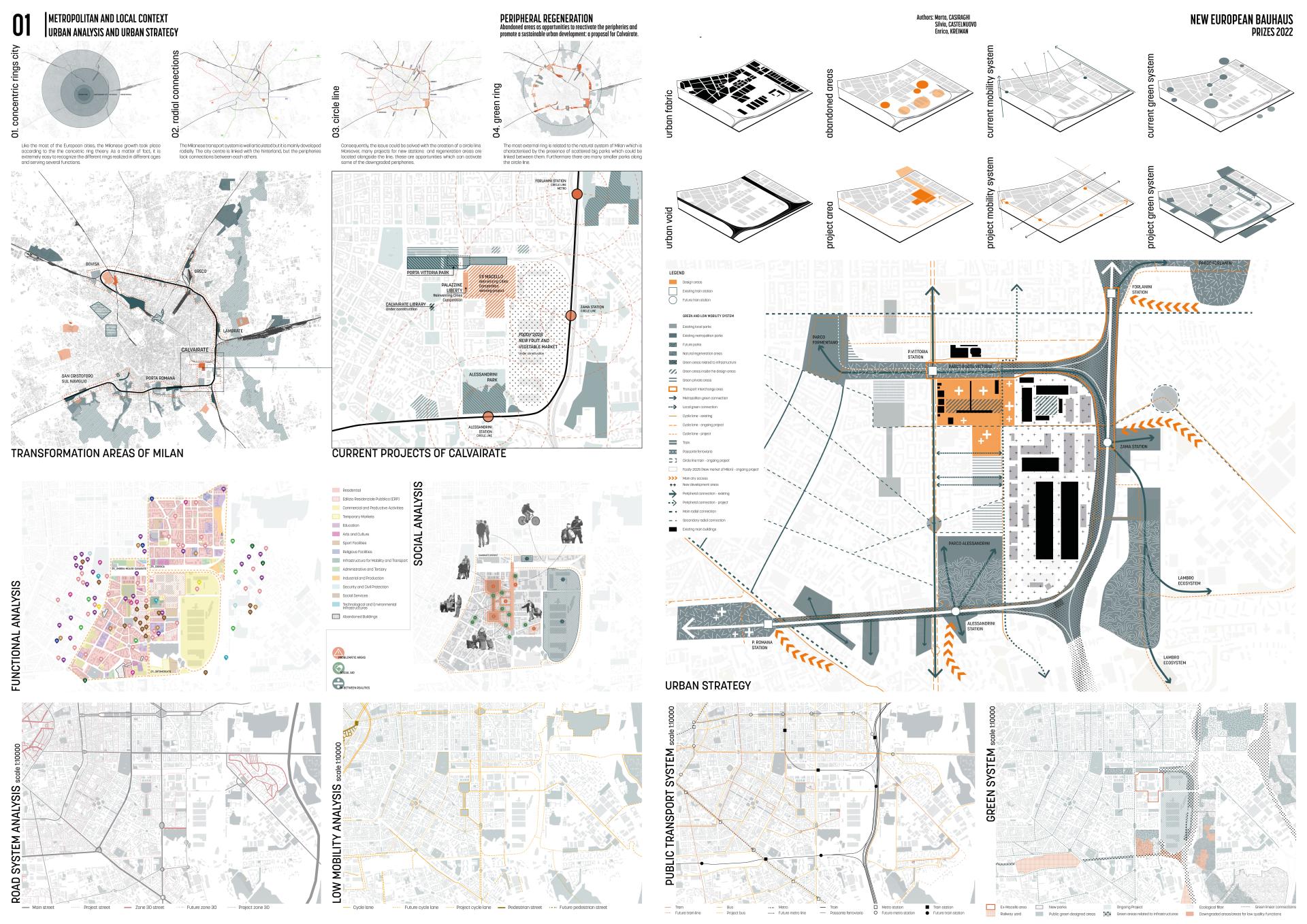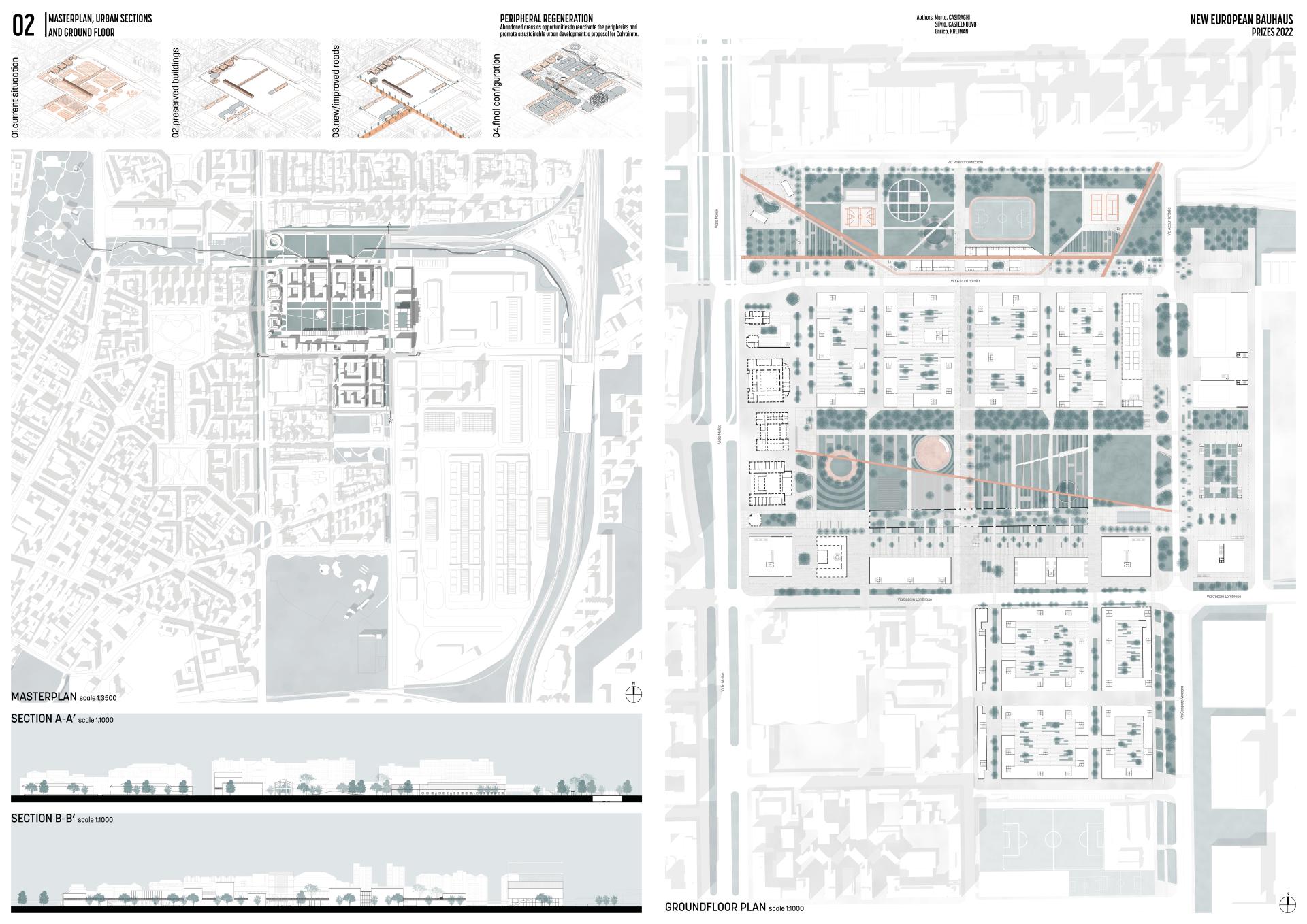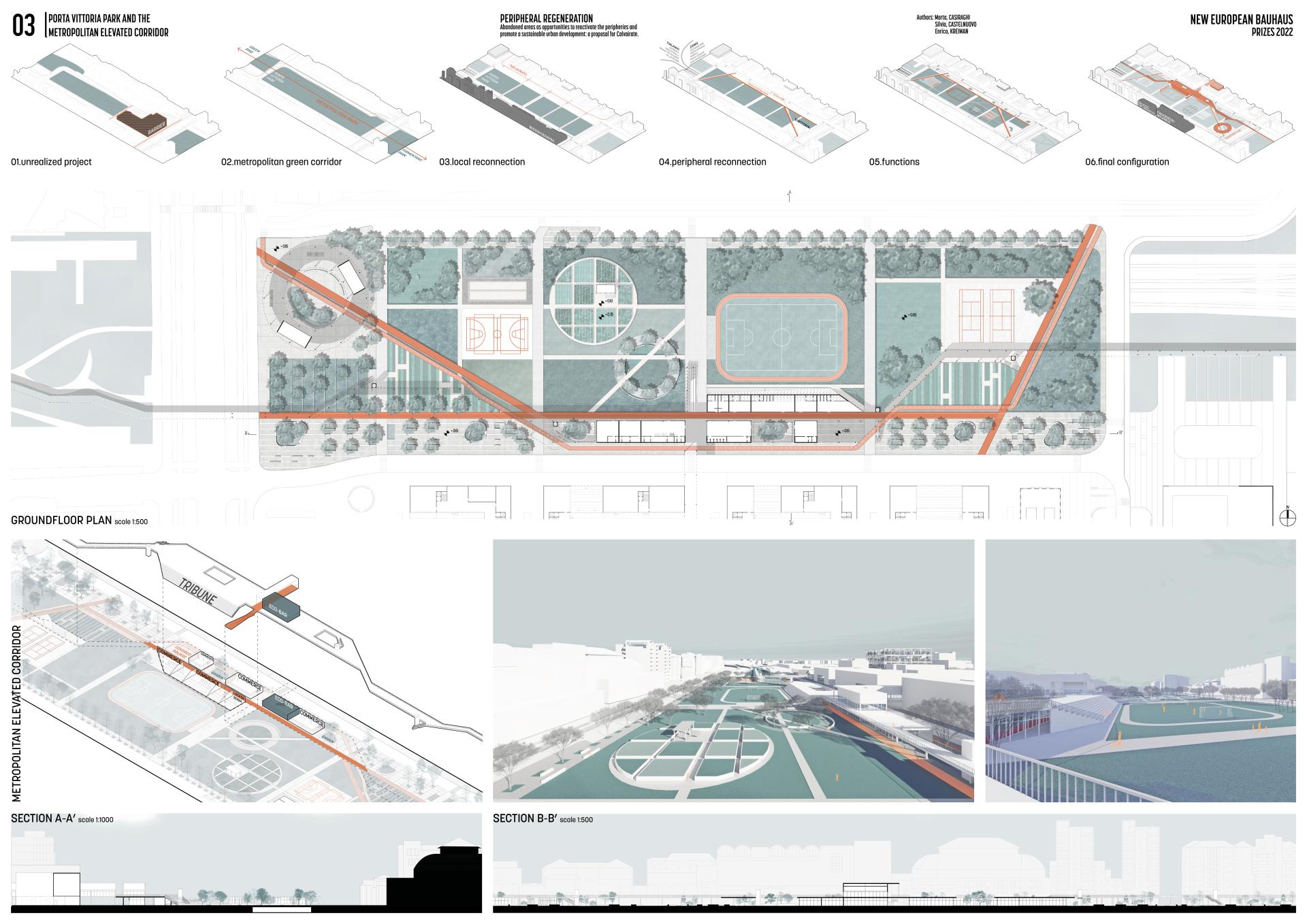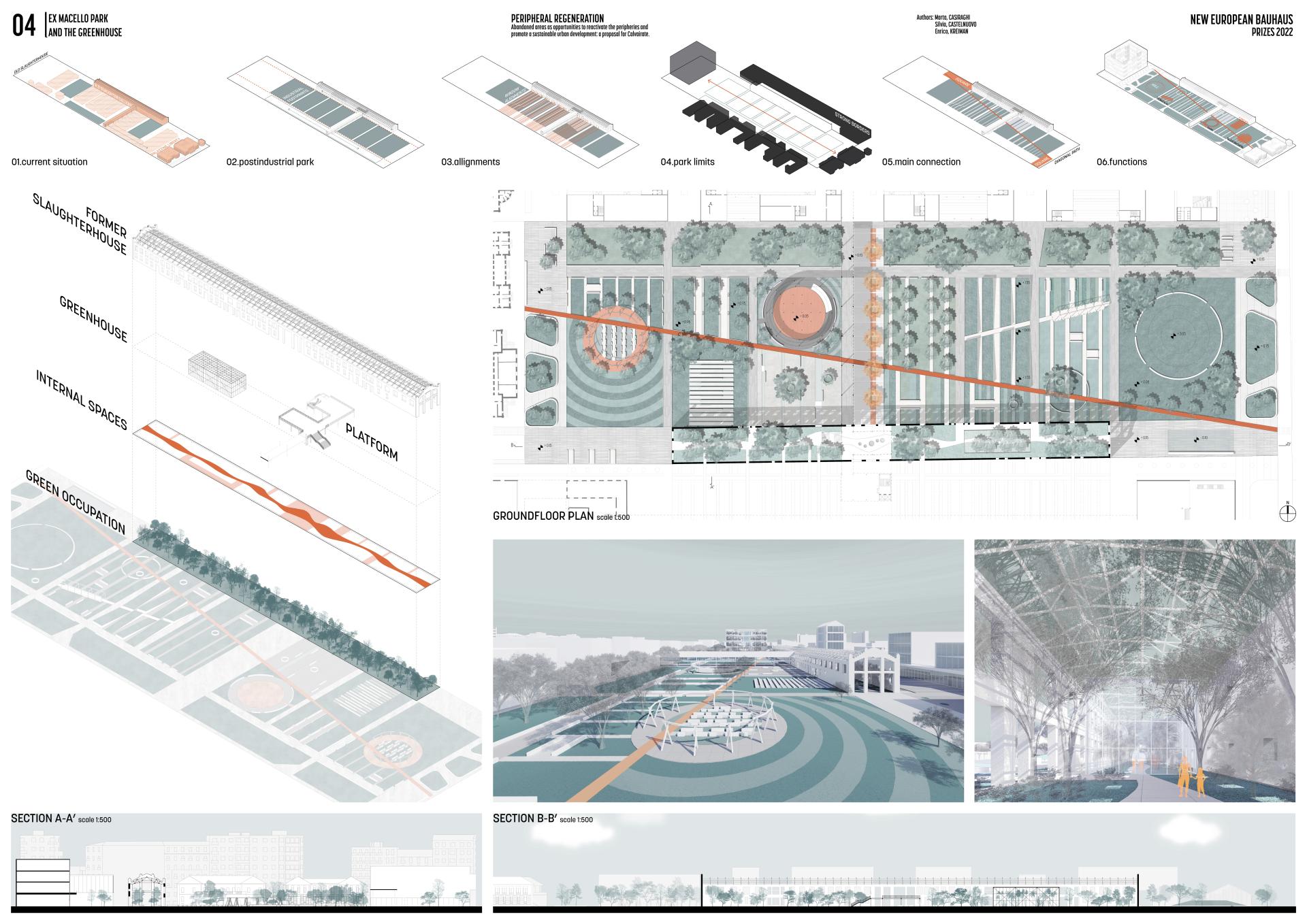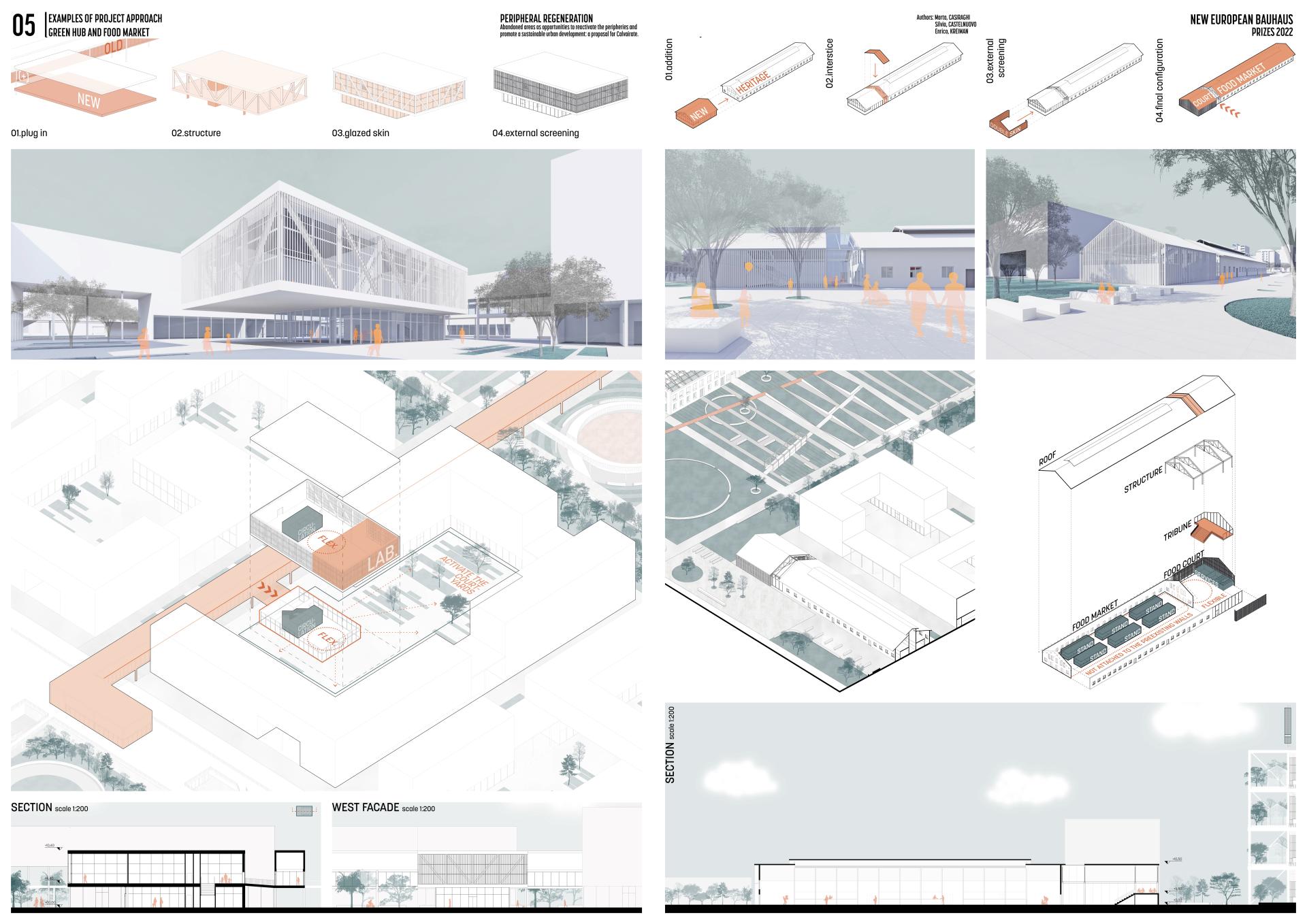Peripheral Regeneration
Basic information
Project Title
Full project title
Category
Project Description
Abandoned areas as opportunities to reactivate the peripheries and promote a sustainable urban development: a proposal for Calvairate.
Geographical Scope
Project Region
Urban or rural issues
Physical or other transformations
EU Programme or fund
Which funds
Description of the project
Summary
The gradual deindustrialization of the city of Milan has generated urban voids in correspondence with large disused production and / or commercial establishments, often located near the railway ring. Consequently, the neighbourhoods located near these problematic areas have undergone a gradual process of urban decay and segregation. Many times the interventions proposed for such areas were punctual and with the aim to create new centralities completely indifferent to the social and urban context.
Therefore, our project proposes an urban regeneration intervention for one of these sites, the Ex-Macello (former slaughterhouse) and Porta Vittoria area in the south-eastern district of Milan, by taking into consideration the issues arising from both the metropolitan and local context. The location, dimension and potential of the Ex-Macello area, represent an incredible opportunity to rethink and reactivate a neighbourhood which has suffered from the presence of large, abandoned areas for years and give back to the community this long gone meeting point.
The idea of including the urban void of Porta Vittoria within the intervention area derives from the belief that it is impossible to limit the urban regeneration process to a clearly delimited area. The project's aspiration is to create a dialogue with the neighbourhood, proposing a system of urban spaces capable of restoring a direct connection with the entire city. As a matter of fact, the centrality of this area is not only referred to the scale of the neighbourhood, but also to a metropolitan dimension linked to the railway infrastructure and the green system. Great importance is given to the reconnection of existing greenery, through the construction of urban parks that will contribute to urban reforestation and enrichment of biodiversity. Particular attention was paid to solving the social problems of the neighbourhood, protecting the local identity through works of inclusion and collaboration with the community.
Key objectives for sustainability
In contemporary cities, it is possible to observe a trend for which many areas of the city are becoming obsolete and abandoned, meanwhile other zones that used to be considered peripheral and downgraded are reconstructed as gentrified spaces. While the peripheries of the city continue to grow, urban voids multiply, turning such neglected areas into new ruins to regenerate.
In this context, the regeneration of the urbanised territory represents an essential and unpostponable task to restore the environmental sustainability of the city, limiting urban dispersion and reducing the impacts produced by the built environment. The exhaustion of the operable areas within the city forces designers to be innovative, searching for ways and forms for "new expansions".
Urban regeneration involves a rational use of the available sources, according to multidisciplinary and multiscale correlations. In order to do so, road and railway infrastructures take centre stage and it becomes essential to review the urban public and private transport system. Furthermore, it is necessary to reconcile the mobility infrastructure with the landscape, the city and the rituals of urban life.
The modernization of the means of transport implies the transformation of stations and railway yards and the reorganisation of the overall infrastructural system. The result of this urban process is the deterritorialization, which creates a heritage of obsolete industrial areas located next to the railway network. In Milan these kinds of spaces proliferate along the railway ring and represent a significant spatial source and the opportunity to regenerate the territory.
The “Peripheral Regeneration” project in Calvairate aims to be a model on how to reactivate downgraded areas promoting sustainable urban development linked to public transport, low mobility and public spaces. Similar actions should be replicated in other neighbourhoods of the Milanese railway ring.
Key objectives for aesthetics and quality
The aesthetic choices taken for this project are aligned with the current configuration of the project area and its location in the urban context of Milan. Since it is an urbanised area inside a residential district, its new shape is mainly characterised by residential blocks with a courtyard, according to the typical configuration of the Milanese context. This analogy allows to give back to the city and to the citizens this unused area which was part of their district that was firstly dedicated to an industrial function and then abandoned.
The residential and public buildings and the parks are designed following the footprint of the existing building, and maintaining a relation with the past and with the surrounding. This is one of the main objectives of this project: to demonstrate that it is possible to regenerate abandoned areas using an existing language, creating a strong bond between the pre-existences and the district. This is an alternative approach in a city like Milan where these wide abandoned areas are usually redesigned using a global style, creating an island inside the city in terms of architecture, social life and economy, since they usually become high rank areas, not aligned with the needs of the habitants who originally live there.
Therefore we think that our approach is innovative, efficient and it responds to the real needs of the neighbourhood, improving their life quality through a smart design, respecting their habits and traditions. Moreover it is easier to replicate this approach in every unused area inside Milan since the approach is simple, effective and concrete.
Key objectives for inclusion
The neighbourhood of Calvairate is often described as a very conflicted reality, lacking services for the community and a general planning solution. In this borderline situation, the Municipality of Milan does very little to help the district, which is often on the news for episodes of criminality and substance abuse; therefore many volunteers try to give aid to the population by offering services such as afterschool for young children, health support, language lessons and many more.
Through the interviews to these realities we tried to understand the essential social needs of such a complex district, building a dialogue and a base for future public participation. After carefully analysing the social context, it became pretty clear that the project itself should have been used as a tool to solve many of the issues arising from the neighbourhood: from the lack of affordable housing, to spaces to socialise and meet, but also places where people in need could feel welcomed and could work together in building their own future.
In order to do so, it is extremely important to take into consideration the opinions and voices of the district, not only propose a design which would function completely on itself, isolating once again the existing community. This is what inclusion looked like for us: trying to give back this abandoned space to the people who once lived it firsthand, listening to their necessities and giving them the right tools to get out of this situation of poverty, abandonment and criminality. It is also because of these reasons that, together with many spaces devoted to the enhancement of the sense of the community, our project included buildings and areas which are not yet fully designed, but are intended as places where the citizens themselves can decide what to do with it. A place designed by people and for people.
Physical or other transformations
Innovative character
As we mentioned before, the Circle line (the project for a Circular Railway Line in Milan) could be considered as an opportunity to reconnect and redesign many of the problematic areas located near the railway ring, of which Calvairate is a perfect example. Those are areas that are now wandering in the dark, but with the right interventions they could return to the light. In such complex projects it is always essential to take into consideration, analyse and decline different dimensions by putting them in relation to each other, not treating them in watertight compartments. Therefore, the three dimensions aforementioned (sustainability, aesthetics and inclusion) are not only parameters with which it is possible to describe our project, but they become intrinsic characteristics and basis of the design.
Starting from a deep analysis and understanding of the social context in which we were operating, the first step was to try and give answers to the needs of the community through our project, so that a strong idea of inclusion could have been the base from which to start the design phase. The result was a sustainable project which took into consideration all the issues arising from the context; sustainability that was not only ecological (with the idea of restoring a green ring and promoting a better attention to the environment) and economical, but also and mainly social by providing tools and spaces to improve the living conditions. Even the aesthetic was not something which came at the end. The idea started together with the proposal of reviving and revitalising some of the previous urban and architectural features of the area and of the Milanese tradition. That is why many of the design choices were guided by the composition and existing buildings of the former slaughterhouse.
Overall these three dimensions perfectly defined our project and contributed to the enhancement of the human scale which is a clear feature of the intervention.

